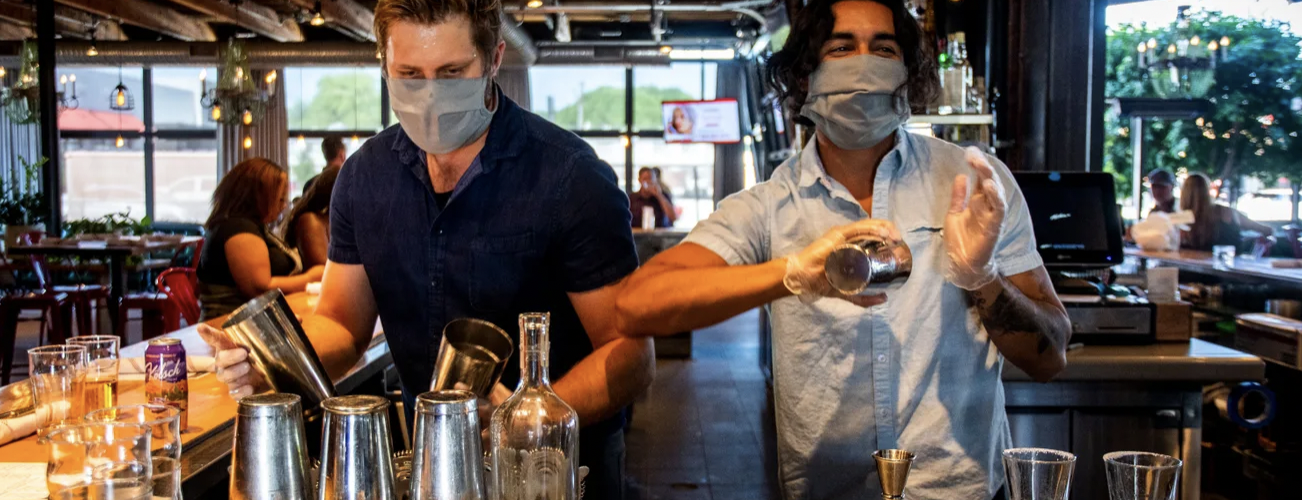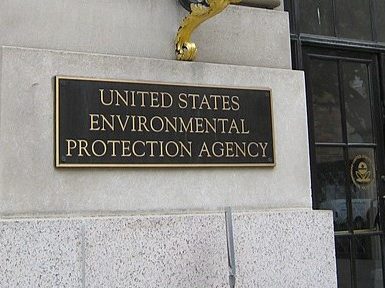Restaurants, bars and other food service providers in Arizona could see more relief to carry them through the final throes of the pandemic that has negatively impacted almost every dining and drinking establishment here.
On Saturday, the U.S. House worked into the wee hours to pass the $1.9 trillion American Rescue Plan that includes $25 billion in restaurant relief. Now, the package is in the Senate for consideration. While there are disagreements over some sections, a provision to help restaurants and bars that are still struggling has strong support.
Relief for small and mid-sized restaurants

Included in the package is the Restaurant Revitalization Fund (RRF) to provide $25 billion in relief for small and mid-sized restaurants. It is based on an amendment overwhelmingly approved by Congress last month that added a dedicated restaurant relief fund to the plan.The amendment was introduced as a bipartisan, bicameral effort from four senators and representatives including Arizona U.S. Senator Kyrsten Sinema (D).
“Arizona restaurants fuel jobs across our state, and these employers need support now more than ever,” Sinema said. “Establishing a restaurant rescue plan will get Arizonans back to work and ensure local Arizona restaurants can keep their doors open as we continue to fight the ongoing pandemic and lay the groundwork for a full economic recovery.”
Forgivable grants would provide aid for payroll, mortgage, utilities and more

Restaurants, bars and other food service businesses that receive grants through the relief package would not need to pay them back as long as they use the funds for essential operating expenses such as payroll, mortgages, rent, utilities, and personal protection equipment.
“Senator Sinema’s bill is a game-changer for an industry that is a critical jobs and economic driver for Arizona. Almost 90 percent of restaurants have furloughed or laid off employees, and that number is on track to only get worse as this pandemic wrecks the industry,” said Steve Chucri, president and CEO of the Arizona Restaurant Association.
Food trucks, caterers, food stands and brew pubs included in aid package
In addition to restaurants and bars, other entities eligible for support from the RRF include food stands, food trucks, food carts, caterers, saloons, inns, taverns, lounges, brewpubs, tasting rooms, taprooms, and any licensed facility or premise of a beverage alcohol producer where the public may taste, sample, or purchase products.
The act allows for grants equal to a pandemic-related revenue loss of up to $10 million per entity or $5 million per physical location. The grants are calculated by subtracting 2020 revenue from 2019 revenue. Entities are limited to 20 locations.
Restaurant relief grants could be used for a variety of expenses including:
- Payroll costs
- Principal and interest payments on a mortgage, not including any prepayments on principal
- Rent payments, not including prepayments
- Utilities
- Maintenance expenses including construction to accommodate outdoor seating and walls, floods, deck surfaces, furniture, fixtures, and equipment
- Supplies including personal protective equipment and cleaning materials
- Food and beverage expenses within the eligible entity’s scope of normal business practice before the covered period, which runs from Feb. 15, 2020, through Dec. 31, 2021, or another date as determined by the Small Business Administration (SBA)
- Covered supplier costs
- Operational expenses
- Paid sick leave
Economically disadvantaged, women and veterans would receive priority
During the first 21 days of the grants, the SBA will prioritize applications from restaurants owned and operated or controlled by women, veterans, or socially and economically disadvantaged individuals.
The plan requires applicants to make a good-faith certification that the uncertainty of current economic conditions makes the grant request necessary to support the applicant’s ongoing operations and that the applicant has not also applied for or received a Shuttered Venue Operator grant.
The plan sets aside $5 billion for eligible applicants with 2019 gross receipts of $500,000 or less. The bill also charges the SBA with awarding the other $20 billion in grants in “an equitable manner to eligible entities of different sizes based on annual gross receipts.”
Concern over $15 an hour mandate in the bill
Many restaurant owners and small businesses in Arizona expressed concern over a provision that sought to raise the federal minimum wage from $7.25 to $15 an hour over four years. It also proposes to eliminate tip credits. The changes would mean that employers would have to pay every worker at least $15 an hour, even if they receive tips.
Flagstaff, Ariz. already has a $15 an hour minimum wage. If Congress were to approve a federal wage hike, Flagstaff would automatically see its minimum wage raise to $17 an hour due to a measure approved by the Flagstaff City Council.
For now, the controversial provision is unlikely to appear in a final deal. The Senate parliamentarian, a neutral arbiter of the chamber’s rules, issued guidance saying she thought it didn’t meet the guidelines for a budget reconciliation package. Under reconciliation, bills can pass with a simple majority, rather than the 60 votes required to invoke cloture, which ends a filibuster on a bill.
What else is in the American Rescue Plan
Other measures included in the rescue plan are:
- An extension of federal unemployment benefits from $300 to $400 per week through the end of September
- A new $15 billion grant program for struggling small business owners, separate from the existing Paycheck Protection Program, along with a $35 billion investment in local financing programs that provide businesses with low-interest loans
- An extension of eviction and foreclosure moratoriums until the end of September, with $5 billion set aside to help tenants struggling to pay rent.
- Restoration of emergency paid sick leave through the end of September
- $350 billion in aid for state and local governments
- $170 billion in aid for K-12 schools and higher education
- $50 billion for Covid-19 testing
- 15 percent increase in SNAP benefits through September
- $20 billion toward a national vaccine program, in partnership with state and local governments
- Increasing the Child Tax Credit to $3,000 per child ($3,600 for children under 6) and making it refundable for the year
Read the full text of the proposal at: American Rescue Plan
















Add comment